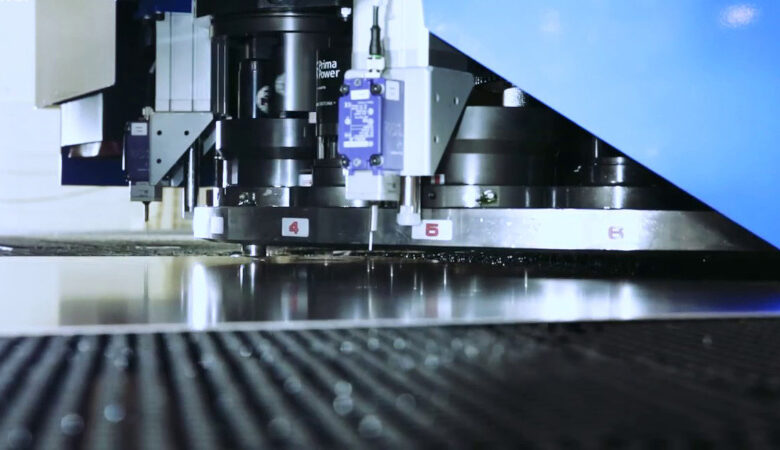Cutting Edge Technology: The Ultimate Guide to Punch Cutting Machines

Introduction
Punch cutting machines are essential tools in various industries, including manufacturing, automotive, textiles, and packaging. These machines use a punch and die mechanism to cut, shape, or emboss materials with precision and efficiency. This comprehensive guide explores the different types of punch cutting machines, their applications, benefits, and provides tips for choosing the right machine to meet your specific needs.
Understanding Punch Cutting Machines
What is a Punch Cutting Machine?
A punch cutting machine utilizes a punch and die system to cut materials into specific shapes or designs. The punch, a solid metal rod with a cutting edge, presses down into the material against the die, which has a corresponding negative shape. This action shears the material, creating clean and precise cuts. Punch cutting machines work on the principle of shearing, where the material is subjected to a compressive force that causes it to rupture along a predetermined path.
Types of Punch Cutting Machines
- Manual Punch Cutting Machines: Operated by hand, these machines are suitable for small-scale production and simple cutting tasks.
- Hydraulic Punch Cutting Machines: Use hydraulic pressure to drive the punch, offering greater power and precision for cutting thicker or tougher materials.
- Mechanical Punch Cutting Machines: Utilize mechanical levers and gears to generate force, ideal for medium to large-scale production with consistent results.
- CNC Punch Cutting Machines: Controlled by computer numerical control (CNC) systems, these machines provide high precision and automation, suitable for complex and high-volume cutting tasks.
Applications of Punch Cutting Machines
Manufacturing
Punch cutting machines are widely used in manufacturing for cutting metal sheets, creating components for machinery, and producing parts for various industries such as aerospace, automotive, and electronics.
Textiles and Leather
In the textiles and leather industries, punch cutting machines are used to cut fabric, leather, and synthetic materials into specific patterns for clothing, accessories, and upholstery.
Packaging
The packaging industry utilizes punch cutting machines to create packaging materials, such as cardboard boxes, plastic containers, and custom-shaped packaging solutions.
Automotive
In the automotive sector, punch cutting machines are essential for producing parts like gaskets, seals, and interior components with high precision and consistency.
Benefits of Using Punch Cutting Machines
Precision and Accuracy
Punch cutting machines provide high precision and accuracy, ensuring consistent and clean cuts, which is essential for producing high-quality components and products.
Efficiency and Speed
These machines are capable of performing repetitive cutting tasks quickly and efficiently, increasing productivity and reducing production time.
Versatility
Punch cutting machines can handle a wide range of materials, including metals, plastics, textiles, leather, and paper, making them versatile tools for various industries.
Cost-Effectiveness
By automating cutting processes and reducing material waste, punch cutting machines help lower production costs and improve overall operational efficiency.
Choosing the Right Punch Cutting Machine
Assess Your Needs
Determine the specific requirements of your cutting tasks, such as the type of material, thickness, and complexity of the shapes. This will help you choose the appropriate type of punch cutting machine.
Consider Production Volume
For small-scale production, a manual or mechanical punch cutting machine may suffice. For high-volume or complex tasks, consider hydraulic or CNC punch cutting machines for better efficiency and precision.
Evaluate Machine Features
Look for features that enhance performance and ease of use, such as adjustable stroke length, die sets, safety mechanisms, and automation capabilities.
Quality and Durability
Invest in a machine from a reputable manufacturer known for quality and durability. A robust machine will provide reliable performance and longevity, reducing the need for frequent repairs or replacements.
Budget and Cost
Consider your budget and the overall cost of the machine, including maintenance and operating expenses. While higher-end machines may have a higher upfront cost, they often provide better long-term value through increased efficiency and lower maintenance costs.
Tips for Optimal Use and Maintenance
Regular Maintenance
Perform regular maintenance to keep the machine in optimal condition. This includes cleaning, lubricating moving parts, and checking for wear and tear on the punch and die components.
Proper Training
Ensure that operators receive proper training on using the machine safely and effectively. This reduces the risk of accidents and ensures consistent cutting quality.
Use Quality Materials
Use high-quality materials for the punch and die components to maintain precision and extend the machine’s lifespan. Regularly inspect and replace worn or damaged parts. Punch cutting machines are extensively used in the sheet metal fabrication industry to cut, shape, and form metal sheets into components and parts.
Monitor Performance
Regularly monitor the machine’s performance and make adjustments as needed. This helps maintain cutting accuracy and efficiency over time.
Safety First
Always prioritize safety when operating punch cutting machines. Follow manufacturer guidelines, use appropriate personal protective equipment (PPE), and ensure safety mechanisms are in place and functioning.
Conclusion
Punch cutting machines are invaluable tools in various industries, offering precision, efficiency, and versatility for a wide range of cutting tasks. By understanding the different types of machines, their applications, and benefits, you can make an informed decision when choosing the right machine for your needs. Proper use and maintenance ensure optimal performance and longevity, helping you achieve high-quality results and improve your production processes.






